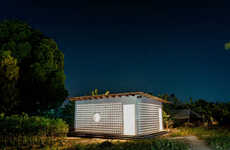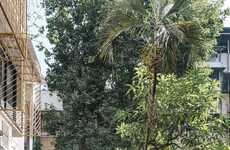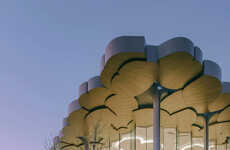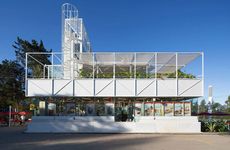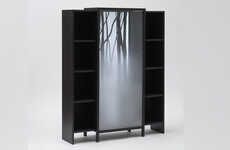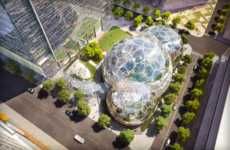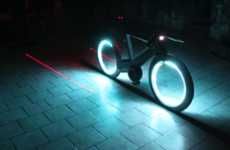
This Indonesian Library Uses Ice Cream Tubs to Form Its Walls
Riley von Niessen — July 19, 2016 — Social Good
An Indonesian architecture firm known as 'Shau' created an innovative library that makes use of recycled ice cream tubs to form its walls.
The projected was dubbed the 'Microlibrary' and is located in Bandung, a large city in Indonesia. Ice cream tubs decorate the building for a modernistic look that's highly affordable and protective against natural elements, with the firm looking for an alternative that would also allow natural light to enter and facilitate air flow.
The use of ice cream tubs not only offers a low cost solution, but spells out a message that coincides with the agency's goal of increasing literacy among children. The ice creams therefore form the words "buku adalah jendela dunia," which translates to "books are the windows to the world."
The projected was dubbed the 'Microlibrary' and is located in Bandung, a large city in Indonesia. Ice cream tubs decorate the building for a modernistic look that's highly affordable and protective against natural elements, with the firm looking for an alternative that would also allow natural light to enter and facilitate air flow.
The use of ice cream tubs not only offers a low cost solution, but spells out a message that coincides with the agency's goal of increasing literacy among children. The ice creams therefore form the words "buku adalah jendela dunia," which translates to "books are the windows to the world."
Trend Themes
1. Upcycled Architecture - The use of recycled materials in architecture offers opportunities for affordable and sustainable building solutions.
2. Affordable Innovation - Finding innovative ways to construct buildings using low-cost materials allows for greater accessibility and affordability in the construction industry.
3. Literacy Initiatives - Incorporating design elements that promote literacy can help to increase interest in reading and learning among children.
Industry Implications
1. Architecture - The architecture industry can explore the use of upcycled materials to create cost-effective and environmentally friendly structures.
2. Construction - The construction industry can benefit from embracing innovative techniques that lower costs and increase accessibility for building projects.
3. Education - The education industry can leverage design elements to create engaging spaces that foster a love for reading and promote literacy among children.
4.8
Score
Popularity
Activity
Freshness


